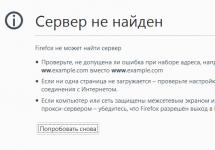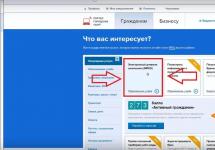Hello.
Today, one of the most popular types of media is a flash drive. And no matter what anyone says, the age of CD/DVD discs is coming to an end. Moreover, the price of one flash drive is only 3-4 times more than the price of a DVD! True, there is one small “but” - it is much more difficult to “break” a disk than a flash drive...
Although not often, one unpleasant situation sometimes happens with flash drives: you remove the microSD flash card from your phone or camera, insert it into your computer or laptop, but it doesn’t see it. There can be many reasons for this: viruses, software errors, failure of a flash drive, etc. In this article, I would like to stop on the most popular reasons for invisibility, as well as provide some tips and recommendations on what to do in such cases.
Types of flash cards. Is SD card supported by your card reader?
Here I would like to dwell in more detail. Many users often confuse one type of memory card with another. The fact is that there are three types of SD flash cards: microSD, miniSD, SD.
Why did the manufacturers do this?
There are simply different devices: for example, a small audio player (or a small mobile phone) and, for example, a camera or photo camera. Those. The devices are completely different in size with different requirements for the speed of flash cards and the amount of information. This is why there are several types of flash drives. Now in more detail about each of them.
1. microSD
Size: 11mm x 15mm.
MicroSD flash cards are very popular thanks to portable devices: players, phones, tablets. Using microSD, the memory of the listed devices can be increased very quickly by an order of magnitude!
Usually, when purchasing, they come with a small adapter so that this flash drive can be connected instead of an SD card (more on them below). By the way, for example, to connect this flash drive to a laptop, you need to: insert micsroSD into the adapter, and then insert the adapter into the SD slot on the front/side panel of the laptop.
2.miniSD
Size: 21.5mm x 20mm.
Once popular cards used in portable technology. Today they are used less and less, mainly due to the popularity of the microSD format.
3. SD
Size: 32mm x 24mm.
Flash cards: sdhc and sdxc.
These cards are mostly used in devices that require a large amount of memory + high speed. For example, a video camera, a car video recorder, a camera, etc. devices. SD cards are divided into several generations:
- SD 1 – from 8 MB to 2 GB in size;
- SD 1.1 – up to 4 GB;
- SDHC – up to 32 GB;
- SDXC – up to 2 TB.
Oh, very important points when working with SD cards!
1) In addition to the amount of memory, SD cards indicate the speed (more precisely, the class). For example, in the screenshots above, the card class is “10” - this means that the exchange speed with such a card is at least 10 MB/s (more details about classes: https://ru.wikipedia.org/wiki/Secure_Digital). It is important to pay attention to what speed class of flash card is required for your device!
2) microSD using special. adapters (they are usually written adapter (see screenshots above)) can be used instead of regular SD cards. True, doing this always and everywhere is not recommended (precisely because of the speed of information exchange).
3) SD card readers are backward compatible: i.e. if you take a device that reads SDHC, it will read SD cards of 1 and 1.1 generations, but will not be able to read SDXC. This is why it is important to pay attention to what cards your device can read.
By the way, many “relatively old” laptops have built-in card readers that are not able to read new types of SDHC flash cards. The solution in this case is quite simple: buy a card reader connected to a regular USB port; by the way, it looks more like a regular flash drive. Price: several hundred rubles.
SDXC card reader. Connects to a USB 3.0 port.
The same drive letter is the reason why flash drives, hard drives, and memory cards are invisible!
The fact is that if your hard drive has a drive letter of F: (for example) and your inserted flash card is also F:, then the flash card will not be displayed in Explorer. Those. you go to “my computer” - and you won’t see the flash drive there!
To fix this, you need to go to the “disk management” panel. How to do it?
In Windows 8: press Win+X, select “disk management”.
In Windows 7/8: press Win+R and enter the command “diskmgmt.msc”.
Next, you should see a window that will show all connected disks, flash drives, and other devices. Moreover, even those devices that are not formatted and that are not visible in “my computer” will be shown. If your memory card is on this list, then you need to do two things:
1. Change its drive letter to a unique one (to do this, simply right-click on the flash drive and select the operation to change the letter in the context menu, see screenshot below);
2. Format the flash card (if you have a new one, or it does not have the necessary data on it. Attention, the formatting operation will destroy all data on the flash card).
Changing the drive letter. Windows 8.
Lack of drivers is a popular reason why the computer does not see the SD card!
Even if your computer/laptop is brand new and you just brought it from the store yesterday, this does not guarantee anything. The fact is that the store sellers (or their specialists who prepare the goods for sale) could simply forget to install the necessary drivers, or simply be lazy. Most likely, you were given disks (or copied to your hard drive) with all the drivers and you just need to install them.
In general, there are special programs that can scan your computer (or rather, all its devices) and find the latest drivers for each device. I have already written about such utilities in previous posts. Here I will give only 2 links:
- Programs for updating drivers: ;
- Finding and updating drivers:
Connecting an SD card via USB using some device
If the computer does not see the SD card itself, then why can’t you try to insert the SD card into some device (for example, a phone, camera, camera, etc.) and connect it to the PC? To be honest, I rarely remove the flash card from devices, preferring to copy photos and videos from them, connecting them to my laptop via a USB cable.
Do I need special programs to connect my phone to a PC?
New operating systems such as Windows 7, 8 are capable of working with many devices without installing additional software. Installation of drivers and configuration of the device occurs automatically when the device is first connected to the USB port.
For each brand of phone/camera there are utilities recommended by the manufacturer (see on the manufacturer’s website)…
1. Try connecting the card to another computer and check if it recognizes and sees it;
2. Scan your computer for viruses (). Rarely, there are some types of viruses that block access to disks (including flash drives).
That's all for today, good luck everyone!
Every day, more and more people use flash drives to transfer information: they are small, light and you can buy it with the required amount of memory. But what should you do if one day, after inserting it into a USB connector, the flash drive does not appear on the computer, and therefore you will not be able to work with it.
On a working flash drive, when you connect it to the computer, the indicator light starts blinking: green, blue, red. If it does not catch fire, then there may be several reasons why this is happening. Let's start dealing with them.
Select another port
You inserted the flash drive into the USB connector located on the front panel of the system unit. The thing is that the front USB ports are not always connected to the motherboard when assembling the computer. In this case, simply insert the flash drive into the ports located on the back of the system unit.
Connect directly
This is the use of a USB hub or extension cable. It is usually needed so as not to move the system unit each time to connect a flash drive. The USB extension cable has a USB plug - it connects to the rear USB port of the system unit, and a USB connector - the flash drive you are using is connected to it.
To eliminate a problem related to the device itself, connect the flash drive directly to the computer. If it works, then there is a problem with the USB extension cable. If not, then the device is in order, and we will figure it out further.

Disable unnecessary devices
Perhaps you have many different devices connected to your computer via USB ports: printer, scanner, mouse, keyboard, web camera, external hard drive. In this case, disconnect all devices, leaving only the keyboard, mouse and flash drive.
If the device works, it means that there is not enough power for the USB ports. The reason may be the low power of the power supply itself or the large volume of the flash drive itself. In this case, change the power supply to a more powerful one, or buy a USB extension cable with an additional power source.
Take it for repair
Unfortunately, flash drives also don’t last forever and can break. Usually they just burn out. In this case, you can either throw it away or try to extract all the important information from it. Also try to take her to specialists to resuscitate her, but, of course, you will have to pay for this. If, when you connect a flash drive to a computer, you hear a characteristic sound, then we’ll look into the other reasons.
Remove viruses
Computer viruses can also cause problems with a flash drive. In this case, you need to connect the flash drive to the computer and perform a full scan of disks and removable media using an antivirus program. If your antivirus detects anything, delete the malicious files.
Reinstall drivers
It may be that the computer simply does not see the drivers for the device, or they are out of date. In this case, you will have to remove the existing drivers for the flash drive and install new ones. To do this, go to “My Computer” and right-click on the free space. Next, select “Properties” from the context menu.

In the next window, go to the tab "Device Manager".

In the device manager we look for the item "USB Controllers" and click on the small arrow on the left. The list of devices expands. Now you need to insert the flash drive into the computer. After this, the device manager should update and another item will be added to the list. Select this item and right-click on it. Select “Delete” from the context menu. We did this in order to remove the drivers for the flash drive.

Now you need to remove the flash drive from the computer and insert it back. Drivers will update automatically.
Format
It may also be that the file system installed on the computer conflicts with the file system on the flash drive. This is due to the fact that the NTFS file system is usually installed on the computer, and the manufacturer sets FAT on the flash drive. This problem can be solved very easily: you need to format the flash drive to NTFS.
Open the “My Computer” folder and right-click on the flash drive, select from the list "Format".

In the next window, select the desired file system and click “Start”.

If the flash drive does not appear in the My Computer folder, then you can use the following programs to format it: HP USB Disk Storage Format Tool or Hard disk low level format tool. The program interface is clear, you just need to select the file system and format it. By following the links, you can download the programs.
Check if the USB port is working properly
The USB port itself may not be working. Just connect the flash drive to another port, and if it works, then to fix the USB port you need to take the system unit to the workshop.
I will end here. I hope the article will be useful to you. If I haven't described any reason, write in the comments.
Rate this article:Almost everyone uses USB flash drives now. This is a simple and reliable way to transfer and store information. But the malfunction of these devices has become a common problem for many users. Below are all possible causes of problems and options for resolving them.
First, simpler and more effective ways to solve the problem will be described, so you should follow the recommendations in order. But do not forget that some problems, such as severe physical damage, cannot be eliminated.
Reasons why the system does not recognize the device
To operate a USB device, it has a built-in special controller. If there is a certain failure, it may become blocked, which will prevent the computer from recognizing the flash drive.
The reason for the failure may be a power surge, sudden removal of the flash drive, incorrect formatting, etc. Violations of this type can still be corrected, but in case of mechanical or thermal damage, it is impossible to restore the operation of the flash drive.
You can understand that the flash drive is not detected by the computer by the following factors:
- The USB device is connected, but the computer says “insert disk”;
- The message “Device connected, not detected” pops up;
- issues a request to format the flash drive;
- a data reading error message appears;
- The indicator on the drive is on, but it is not displayed on the computer, etc.
The cause of the failure may also be:
- non-working computer USB ports;
- outdated drivers;
- viruses on the device;
- settings failures in BIOS;
- different file systems of the USB device and computer;
- assigning the letter of the connected hard drive to the flash drive, etc.
Driver check
First of all, you need to check whether the driver is installed correctly on your computer.
To do this, go to “Disk Management”:

Now try removing and inserting the USB device and see if it appears in this window. If the flash drive is visible and the status is indicated as “Good”, right-click on it and select “Make partition active”.
If there is a problem, the status will show "Not allocated", "Not initialized" or "Unknown", which means that the device is damaged.
The system may assign the wrong letter to the flash drive, which will also prevent it from being recognized. Right-click on the device and select "Change Drive Letter" and assign a different value:

The flash drive driver itself needs to be checked in Device Manager:
- start;
- control Panel;
- device Manager.
If the driver for the flash drive is not installed, yellow question marks will appear next to one or more USB devices.
Computer hardware errors
When the PC does not detect a new flash drive, insert it into different USB ports. If all ports are operating normally except one, the cause of the problem is a problem in that port.
The same problem can arise when connecting a flash drive not directly, but through a USB hub or extension cable. Try connecting the device directly to the USB port. If everything works, then the adapter is the cause.
It happens that many devices are connected to the computer via USB, then the ports may not have enough power to operate the flash drive. Disconnect other devices from the ports one at a time, leaving only the mouse and keyboard. If the USB drive now works, then the problem is due to lack of power.

In this case, it is better to install a more powerful power supply or USB hub with a separate power source. But if the size of the flash device is very large, older laptop models simply will not handle its power. With this option, it is almost impossible to solve the problem.
Another problem is the heating of the connected USB device. The malfunction may be a short on the device board.
You can check this on another computer - if it continues to heat up, then the USB drive is faulty. And if everything is fine in other places, then the computer port itself may short out.
If the flash drive and USB port are working properly, the indicator on the device will light up. Then the cause of the problem is systemic, not hardware.
Video: Recovering a flash drive that is not recognized by the computer
Virus check
Then why is the flash card seen by the computer, but not read? One reason could be a virus that infects the boot file of the USB drive. Because of this, the device either does not boot at all or is immediately blocked by the antivirus. And if it is displayed, it displays a warning “Access denied” when you try to open it.
First of all, you should destroy the infected boot file “autorun.inf”. To do this, enter the address of the flash drive in Explorer (for example, G:/):
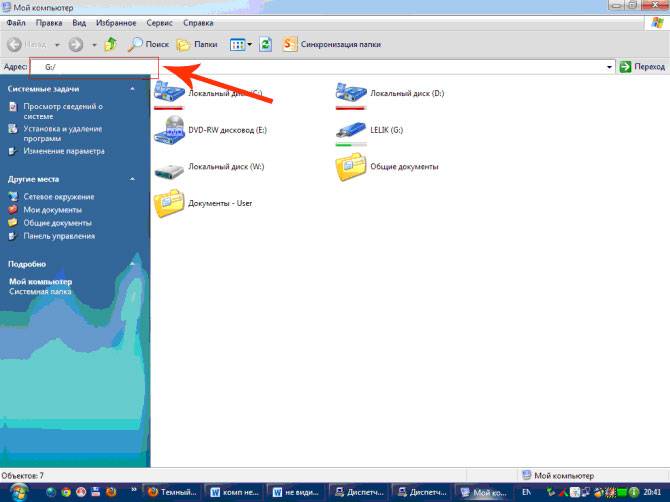
- "Service";
- "Folder properties";
- "View";
- “Hidden files and folders”;
- "Show hidden files and folders."
The download file will now be displayed. It must be removed and data from the entire device scanned with an antivirus.
If the flash drive does not open through Explorer, use the command line:
- start;
- execute;

- command “cd F:/” (or your own drive letter);
- command “attrib -a -s -h -r autorun.inf”;
- "Enter";
- command "del autorun.inf";
- "Enter".
Setting up USB in BIOS
The flash drive may not be recognized due to USB ports being disabled in the BIOS. This happens very rarely, but it's best to check your settings just in case. Please note that no device will be recognized in a disabled USB port, so if others work fine, then skip this step.
To enter the BIOS, restart the computer and press the Del or F2 button while turning it on. Different PCs may have different keys, so look at what is written on the screen (approximately “Press F2 to enter Setup”). If a blue table with settings opens, then everything is correct - you have entered the BIOS.
Now you should find the menu item in which the inclusion of USB is regulated. Its name may vary, but most often it is the Advanced (Peripherals, Integrated Peripherals) tab:

In it, look for the item USB Configuration/Controller, etc. There are a lot of BIOS menu options, so it’s quite difficult to specify the exact item. But the word USB must be present. Now make sure that USB support is “Enabled”, if not, then switch them:
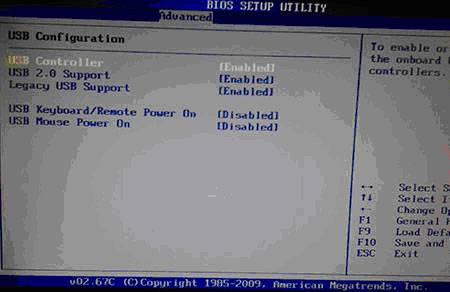
Some BIOS versions not only regulate how the controller turns on, but also indicate its operating mode - V1.1 or V1.1+V2.0 (there is already 3.0). Choose the option that supports all directions (V1.1+V2.0). Save the settings and exit the BIOS (most often the F10 key).
USB drive is not detected by the system due to errors
After formatting, which may not have been entirely successful, the operating system may not see the flash drive due to errors. This can be checked in the “Disk Management” item, the entrance to which was described above. If the flash drive says “Good”, but it is still not visible in Explorer, the cause may be a formatting error.
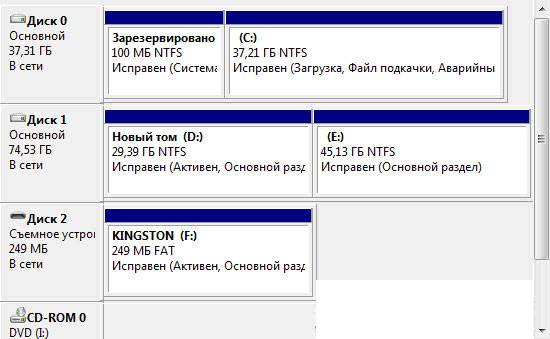
This can be eliminated by new formatting. Right-click on the device and select “Format”. The flash drive should now display and work without errors.
Different file systems of flash cards and computers
To restore the operation of a usb flash that is not detected on the PC, you need to change the file system, which may cause a conflict on the computer. The file system of the latter is most often NTFS, while the flash device is FAT32. In the Disk Management window, you can see the file system types of different PC media.
Correct formatting solves the problem. For this:

In the window that opens, check the compliance of the specified capacity and the parameters of the flash drive. Specify the file system NTFS and check the box next to “Fast (cleaning table of contents)”. Now click “Start”:

Confirm your actions:

After the process is completed, the system will notify you:
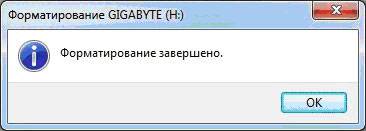
Required OS updates for operation
When Windows XP is installed, the flash drive may not be recognized due to outdated updates required for its operation. However, some flash drives can work in PC USB ports, while others cannot.
The main updates required for normal operation of USB devices:
- KB925196 – incorrect recognition;
- KB817900 – port operation stops after the device is removed and reloaded;
- KB968132 – errors when connecting several flash drives;
- KB88740 – Rundll32.exe error;
- KB895962 – stops the USB device after turning off the printer;
- KB871233 – the flash card does not work after the PC wakes from sleep or hibernation;
- KB314634 – support only older USB devices;
- KB312370 (2007) – USB 2.0 support.
Recovery methods
When no problems are found with the system, you can use special recovery programs:
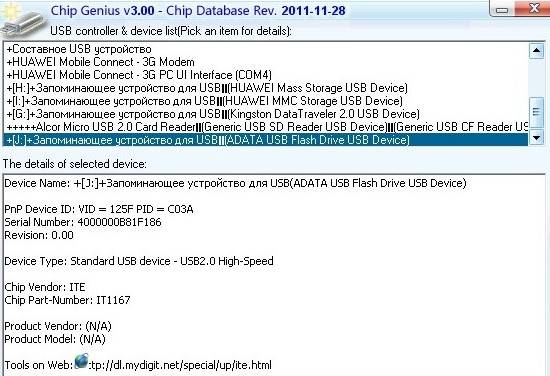
- ChipGenius – determines the manufacturer and other information about the device;
- AlcorMP – reflashes usb flash controllers from most manufacturers;
- JetFlash Recovery Tool – flashes flash drives from Transcend.
If your computer says "Insert disk" when booting, the problem may be outdated drivers that should be removed.

For this:
- When the computer is turned off, disconnect all USB devices (except the mouse and keyboard);
- turn on the PC;
- download the DriveCleanup program;
- Depending on the OS version, copy the 32-bit or 64-bit “drivecleunup.exe” to the C:WindowsSystem32 folder;
- go to the command line and write “drivecleunup.exe”;
- drivers will begin to be uninstalled:
After this, restart your computer. Insert the flash drive and the system will find new drivers for it.

A flash drive may not be detected for many reasons, the main of which are a malfunction of the device or USB port, as well as system errors, most of which can be eliminated by correct formatting and installing drivers. Some programs can also help restore USB flash, so you should follow the instructions in order.
Which results in the USB drive not being recognized. From damaged USB ports to USB formatting issues, the list of possible scenarios is varied. It should also be noted that before applying any of the methods below, the user must ensure that the cause is analyzed and the problem is identified correctly.
The list of reasons that lead to a flash drive being unreadable and which users encounter most often includes the following 5 scenarios:
- USB ports don't work.
- You need to update your USB drivers.
- The operating system (OS) is not updated.
- The USB storage device is faulty.
- The USB firmware is corrupted.
You can find more than one USB recognition program on the Internet that will ensure that the data is retrieved, but it is better not to use these programs as they can pose security risks, possibly compromising the data.
Below are some of the factors that can lead to flash drive recognition problems. It should be noted that these problems need to be resolved as soon as possible:
- Problem with USB formatting. This is the most common type of problem where the user fails to format the drive before first use. The error message states that formatting could not be completed.
- Driver problem. USB drivers are not available or need to be updated.
- Hard drive problems. If the hard drive of the OS and its associated system is not working properly, it is most likely a problem with the hard drive.
- OS related problems: OS if not updated on time also leads to these problems. The only solution is to update the components.
- Port related problems. This can be either hardware or software. If the ports do not recognize USB, professional help is recommended.

USB formatting problem is the most common type of problem
4 Ways to Fix Problem with Flash Drive Not Recognized by Windows
Method 1: Scan for USB problems
Step 1. Insert the flash drive into the USB port.

Step 2. Make sure that the flash drive appears in the “My Computer” section. Then, right-click to open the “Properties” section.

Step 3. Enter the "Service" section.

Step 4. Then you need to click on the “Check Now” button for a new menu to appear. Here both options should be selected and the run button should be clicked to scan the device and fix the problem (some may just say "Check", then you need to click "Check" and then "Check and repair disk").

Method 2: Reformatting USB
Follow this process:
Step 1. Right-click on the flash drive under My Computer to select the Format option.

Step 2. Now, to solve the problem, you need to format the flash drive using NTFS instead of FAT32 or vice versa:

On a note! All information from the flash drive will be deleted!
Method 3: Update drivers
The process looks like this:
Step 1. You need to open the Run window (Win+R), and then enter devmgmt.msc as in the screenshot below:

Step 2. This will take you to the Device Manager (you can also open it through the built-in Windows search, you just need to type “Device Manager” in the search box and Windows will return the desired result).

Step 3. You need to find “Universal Serial Bus controllers” as in the picture below:

Step 4. When you have found the controllers you need, you need to right-click on them and select the option to update drivers, then “Automatically search for updated drivers.”

Method 4. OS update
To update your OS, follow these steps:
Step 1. Go to Control Panel > System and Security.

Step 2. Now you need to make sure that the “Check for updates” option is selected.

The OS will be updated.

Then you need to restart the system to ensure that the problem is resolved.
Software to recover lost data on hard drive
Once the USB recognition problem is resolved, it is recommended that you save all important data to ensure that the problem never happens again. You should also check that all folders are saved and that nothing is missing. Wondershare Data Recovery tool is the most advanced and modern tool designed specifically to solve the problem of file loss. It is better to download it from the official website.

Note! Only 100 megabytes of lost data are free.
Recovering files with Wondershare Data Recovery occurs in 3 steps:
Step 1. First you need to select what types of files you want to recover.

Step 2. Then you need to select the device from which you want to recover these same files.

Step 3. You also need to select the location where these files will be restored.

It won’t be difficult, and the intuitive and simple interface will only help with this.
Video - Flash drive not detected - solution to the problem
Having appeared in 2000, portable flash drives began to rapidly conquer the market for digital storage media. Over the course of several years, they managed to practically displace optical disks, which are significantly inferior in many respects. And, indeed, compared to CD/DVD drives, flash drives have many advantages. They are more compact, reliable, have higher read/write speeds, and can also store a significantly larger amount of data.
But, despite all the positive aspects, USB flash drives, like any other devices, can fail at some point. Most often there are problems with reading or writing data, but it often happens that the flash drive is not detected by the system. In such cases, when connecting the media, the user may receive various notifications, for example, “USB device is not recognized”, “Disk is not formatted”, “Insert disk”. And this despite the fact that the device is connected to a USB port. It may also be that the icon is visible in the system tray, but the flash drive itself is not displayed in the “My Computer” section.
The reasons why the computer does not see the flash drive can be different - hardware malfunctions of the flash drive or USB port itself, incorrect settings in the system or BIOS, file system errors, software conflicts, problems with drivers, virus infection, and so on. Today we will try to analyze the main reasons why a computer may not recognize a flash drive, and at the same time we will give the most effective ways to solve these problems.
Hardware faults
Unfortunately, this type of malfunction is quite common and at the same time the most difficult to fix, so in some cases it is not possible to restore the device’s functionality. Failure can be caused by rough physical impact on the device case, moisture ingress, or damage to the microcontroller due to a short circuit on the board.
It is not difficult to determine whether there is a hardware malfunction; you just need to connect the device to a known working USB port of any computer. If the flash drive does not show any signs of life, the indicator on it does not light up and the characteristic connection sound is not heard, there is a high probability of complete failure of the drive. What to do if the computer does not see the flash drive due to hardware failures? The best thing is not to act on your own, but to take the device to a service center, where competent specialists will take care of it.
USB connectors are disconnected from power
This is another reason why the computer may not see the portable media. When assembling or repairing a PC, the user or technician sometimes forgets to connect the front panel to the power system, and this is where USB flash drives are most often inserted. Naturally, no devices connected to a de-energized panel will be recognized, nor will their indicators light up. Often, along with USB ports, they are left without power and, accordingly, .
The solution here can be twofold. If you need to access the contents of the media urgently, you can insert it into the rear slots of the computer. This, of course, will not solve the cause of the problem, but immediate access to the flash drive will be obtained. In order for the front panel to be used in the future, it must be connected to the motherboard. In principle, there is nothing complicated about this, and although PC case models may differ significantly, all cables have their own connectors, so the likelihood of making a mistake and connecting the wrong cable to the front panel is almost zero.
However, if you have only a vague idea about the contents of the system unit, it would be preferable to call a specialist to your home.
Connecting the panel to the power system does not provide a 100% guarantee of the operation of the drives connected to it. In some cases, they simply may not have enough power, especially if many other consumers are already connected to the PC. Try disconnecting some of the devices, connecting a USB flash drive to the back panel, and also be sure to check the power supply - it should provide all computer components with sufficient energy.
The flash drive is not visible due to incorrect BIOS settings
If all ports do not work, it may well be that they are disabled at the BIOS level. To get into it, immediately after turning on the computer you need to hold down the F2 or Delete key (the keys may differ for different motherboard manufacturers). The BIOS interface also differs in different PC models, but, as a rule, the necessary settings are located along the path Advanced Settings – USB Configuration.

In the last subsection, you need to find the “USB Controller” parameter and make sure that the value opposite it is set to “Enabled”. If the value is set differently, change it and save the settings by pressing the F10 key.

The computer does not show the flash drive due to a name conflict
If the flash drive is registered by the system, but is not displayed in Explorer, you should check that the letter is assigned to it correctly. So, if a device is assigned a busy letter (or not assigned at all), it will not appear in Explorer. The name conflict is easily eliminated. Team diskmgmt.msc Open Disk Management and find the USB flash drive. If you know its volume, you can easily identify it among other drives, and you can also remove and reconnect the media to the USB port.
In our example, the flash drive has the letter H, which matches one of the virtual drives, and therefore is not displayed in the “This PC” section. Right-click on the icon and select “Change drive letter or drive path...” from the menu.

In the window that opens, click “Change” and select a letter from the list that is not used anywhere on the PC.

Save the new settings by clicking the “OK” button. After this, the flash drive should become visible in Explorer.
Drivers for USB ports or flash drives are missing or incorrectly installed
Often the reason that Windows 7/10 does not see the flash drive is a failure of the drive drivers or USB ports. In both cases, the problem is solved by reinstalling or updating the drivers. By inserting the flash drive into the slot, through the menu Win+X launch Device Manager, expand the item in the window that opens USB Controllers - USB Mass Storage Device, right-click on it and select “Delete” from the menu.

After this, remove the drive and connect it again. As a result of this manipulation, the drivers will be reinstalled.
If the actions did not bring a positive result, then you need to reinstall or update the drivers of the USB ports themselves. There are two options here. If you have a disk with “native” motherboard drivers, install the drivers from it. You can also use a popular program to automatically detect and update outdated or malfunctioning drivers DriverPack Solution.
File system incompatibility
File system conflict is relatively rare, but it cannot be ruled out. There are examples when flash drives connected to devices running Android were no longer recognized normally in Windows. A similar situation can occur when connecting flash drives formatted in the ExFAT file system used on Macs to a computer. The problem can be solved by formatting the drive in NTFS through the disk properties. The main thing is not to forget to make a backup copy of all data before doing this by connecting the drive to the device on which it was recognized.


It’s worth saying a few words separately about file system errors. As a rule, a drive with such errors is recognized by Windows, and problems are observed mainly with reading/writing data. The exception is when the file system of a flash drive is defined as RAW, when the device appears empty in Explorer. In both cases, the problem is resolved either by formatting or by checking the disk with the command chkdsk [flash drive letter]: /f followed by error correction.

Action of viruses
Virus infection is another possible reason why a flash drive may not be recognized. Signs of infection vary widely, but most often it is indicated by the “Application not found” or “Removable media not found” notifications. If you suspect an infection, you must perform a full scan of your computer and flash drive with an antivirus program. Before scanning the drive, you should also check its contents for the presence of a hidden file Autorun.inf and, if one is found, be sure to remove it.
Other reasons
Above we looked at the main points that help answer the question of why the computer does not see the flash drive. In fact, there may be many more reasons. Conflicts between drivers and hardware, malfunctions and contamination of ports, repeated connection/removal of a drive from a port - all of this can become potential sources of the problem.
It is likely that the media is not detected due to USB ports being disabled in the system settings. It's easy to check. Connect the USB flash drive to the computer, click Win+X, select “Device Manager” from the menu and expand the “USB Controllers” item in the window that opens. If the USB Mass Storage Device item has a yellow exclamation mark, there is a good chance that the USB port is disabled in the registry or Local Group Policy Editor. We check the settings as follows.

Team regedit(entered in the “Run” window) open the registry editor, expand the branch HKEY_LOCAL_MACHINE/SYSTEM/CurrentControlSet/services/USBSTOR and see what value the parameter has Start. It should have a value of 3, if it is different, correct it by replacing it with 3. After making the changes, restart the computer and check the operation of the USB ports.

Alternatively, the settings can be checked through the Local Group Policy Editor. Open it with the command gpedit.msc and expand the thread Computer Configuration - Administrative Templates - System - Access to Removable Storage Devices.

Double-click on the “Removable drives: Deny read” setting on the right side of the window and make sure the switch is set to “Disabled” or “Not configured.”
 We hope that the information provided will help you resolve problems related to your USB drives.
We hope that the information provided will help you resolve problems related to your USB drives.
